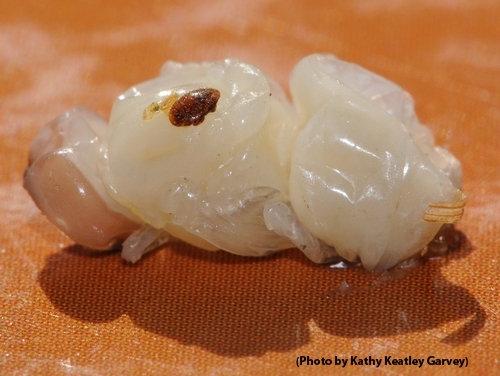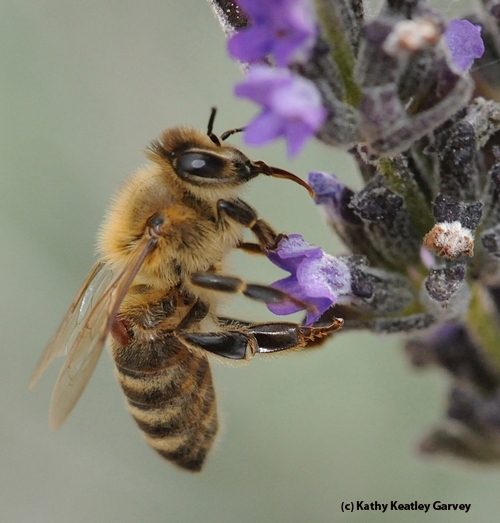Newly published research by a Michigan State University-led team indicates that one of the reasons why the varroa mite is so destructive is because it infiltrates hives by smelling like a bee.
The parasitic mite, or Varroa destructor, is a "blood sucker" that feeds on bees. Scientists and beekeepers alike consider it the world's No. 1 enemy of honey bees.
MSU entomologist Zachary Huang, a lead author of the paper in Biology Letters, and his fellow researchers showed that "mites are able to change their surface chemicals to an entirely different species of honeybees," according to an article in the American Bee Journal. "Further, they also revealed that the mites were able to make these changes rather quickly - adapting in days rather than evolving over generations."
The varroa mite was initially found in Asian honey bees (Apis cerana) and then shifted hosts to the European honey bee (Apis mellifera). It was first detected in the United States in 1987. Today it is found in hives throughout the world except in Australia.
The eight-legged reddish-brown parasite, about 1–1.8 mm long and 1.5–2 mm wide, is a blood sucker that's difficult to control, according to Extension apiculturist emeritus Eric Mussen of the UC Davis Department of Entomology and Nematology. Mites transmit viruses (there are now some 22 named RNA viruses) that can wipe out a hive. A familiar mite-transmitted disease that beekeepers see is DWV or Deformed Wing Virus. Mites can also lower the protein level of a bee's blood, and reduce its weight and life span.
Mussen says that mites spread from colony to colony by phoresy (animal-to-animal transport). They ride on flying drones (males) and adult worker bees (females). They also spread changing hosts on flowers.
"A mite enters a honey bee cell just before or during the time it is being capped," Mussen points out. "It feeds on older larva or prepupa. Sixty hours later, the mite lays its first egg. The egg will hatch in about 24 hours."
"The number and release of offspring depend on the length of the pupal stage. The queen is pupa for 8.5 days (no mites). The worker is pupa for 12.5 days (1.3 mites) and the drone is pupa for 14.7 days (3 or 4 mites)," he says. Thus, due to the longer time required for drone development, drone pupae get the worst of it.
"When maturing, the newly emerged mites climb onto adult bees and feed by puncturing the intersegmental membranes and sucking the bee blood," Mussen related recently to a UC Davis class. "Often these are nurse bees that stay around the brood nest. Sometimes the hosts are drones and older foragers that are flying from the hive every day. Eventually the new mite climbs off the nurse bee onto a comb in the brood nest and enters a cell. The reproductive cycle starts and within 6 days, 44 percent of the young mites have moved into the brood cells; within 12 days, 69 percent of the mites are in the brood cells; and within 24 days, 90 percent of the mite are in the brood cells."
"If there is no brood, the mite has to feed on adult bee blood every six days or so to remain alive," Mussen says. "Mite life expectancy in summer is around 60 days; bees about 42 days. Mite life expectancy in the winter is up to 9 months; bees about six months."
Now if scientists could only figure out how to eliminate the varroa mite from the world's hives...
Attached Images:

Questions about the Varroa mite (Varroa destructor), enemies of honey bees, are often asked at the Linnaean Games. This varroa is on a drone pupa. (Photo by Kathy Keatley Garvey)Mite on drone pupa. (Photo by Kathy Keatley Garvey)

A varroa mite is visible on this forager. (Photo by Kathy Keatley Garvey)